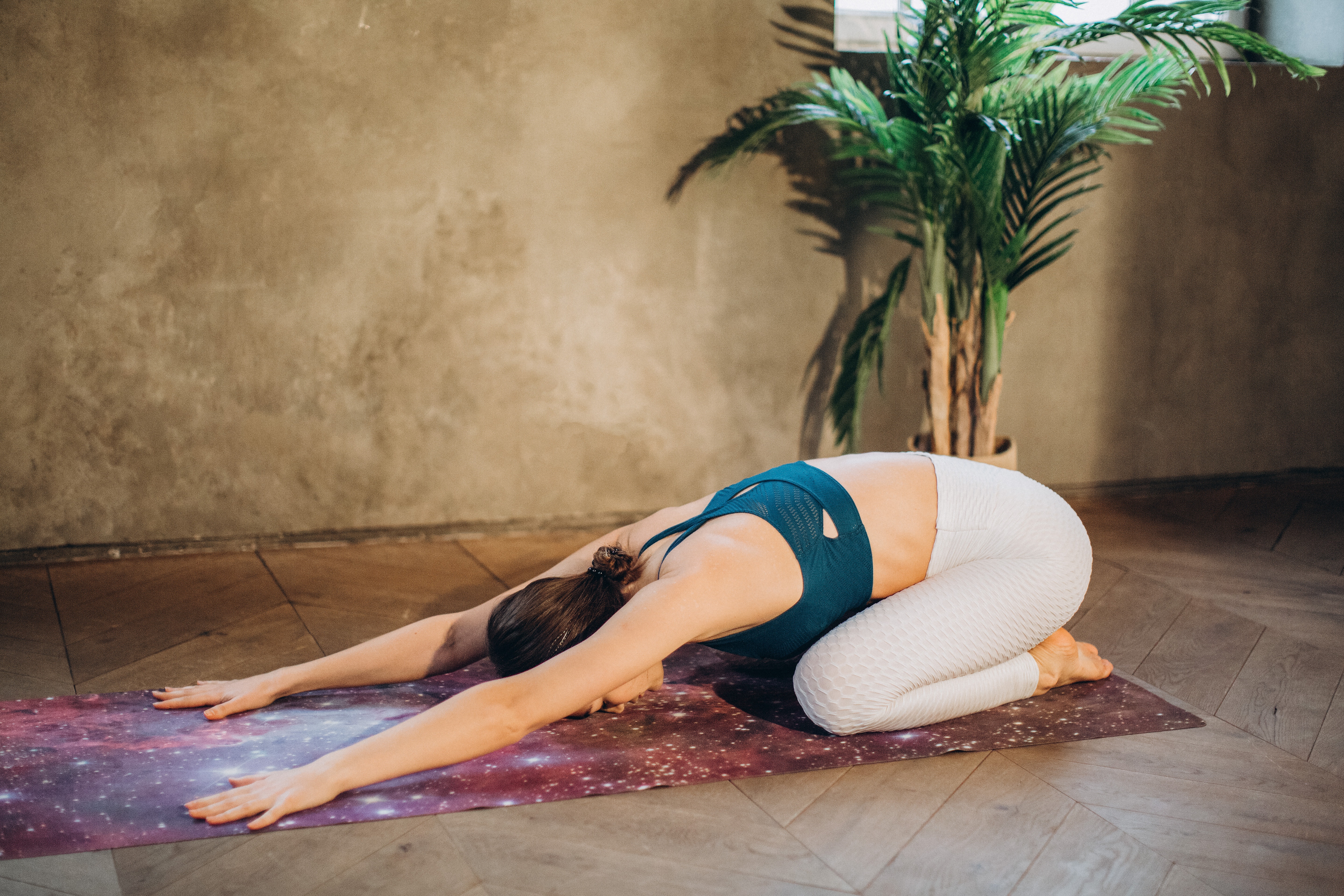Child's Pose (Balasana) is yoga's most important resting posture and it is a nice way to gently stretch various parts of your body.1 It's a chance to stop what you are doing, reassess your position, reconnect with your breath, and prepare yourself to move forward. In class, the teacher may offer the opportunity to rest in child's pose after a fast-paced vinyasa sequence, a long hold in a pose like Downward Facing Dog or Plank, or an attempt at a challenging inversion. It is a counter pose for Cobra and other back extensions.
Child's Pose is a gentle stretch for the back, hips, thighs, and ankles. It can help relieve back pain.
Learning to use this pose wisely is the part of your developing practice where you listen to your body's inner voice and do what it tells you. Your body will tell you when to rest. It might need different things on different days. Keeping your ear finely tuned to the messages your body is sending you and respectfully responding to them is the greater lesson that child's pose has to offer. You will come to know when to use Child's Pose during your yoga practice.
Child's Pose is a gentle stretch for the back, hips, thighs, and ankles. It can help relieve back pain.
Learning to use this pose wisely is the part of your developing practice where you listen to your body's inner voice and do what it tells you. Your body will tell you when to rest. It might need different things on different days. Keeping your ear finely tuned to the messages your body is sending you and respectfully responding to them is the greater lesson that child's pose has to offer. You will come to know when to use Child's Pose during your yoga practice.
Steps to do Balasana:

- Come to your hands and knees on the yoga mat.
- Spread your knees as wide as your mat, keeping the tops of your feet on the floor with the big toes touching.
- Bring your belly to rest between your thighs and root your forehead to the floor. Relax the shoulders, jaw, and eyes. If it is not comfortable to place the forehead on the floor, rest it on a block or two stacked fists. There is an energy point at the center of the forehead in between the eyebrows that stimulates the vagus nerve and supports a "rest and digest" response. Finding a comfortable place for the forehead is key to gaining this soothing benefit.
- There are several possible arm variations. You can stretch your arms in front of you with the palms toward the floor or bring your arms back alongside your thighs with the palms facing upwards. These are the most common variations. But you can also stretch the arms forward with palms facing up for a shoulder release or try bending the elbows so that the palms touch and rest the thumbs at the back of the neck. In this position inch the elbows forward.
- Do whichever feel more comfortable for you. If you've been doing a lot of shoulder work, the second option feels nice.
- Stay as long as you like, eventually reconnecting with the steady inhales and exhales of your breath.
Avoid Child's Pose if you have a knee injury. If you are pregnant, spread your legs wider and don't press your stomach onto your thighs. If you have a shoulder injury, keeping your arms by your side will provide the most support.
If you feel any pain, ease out of the pose.